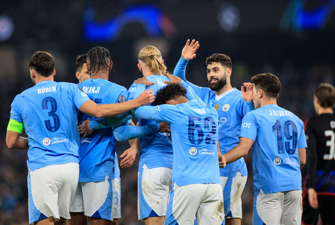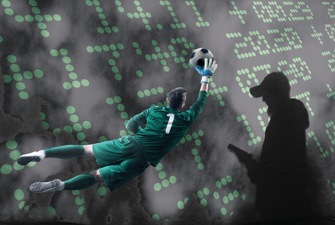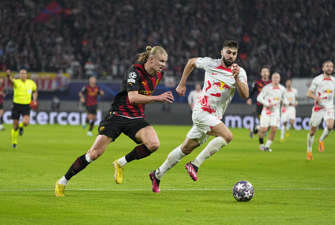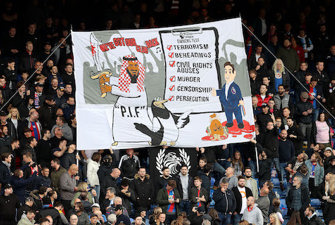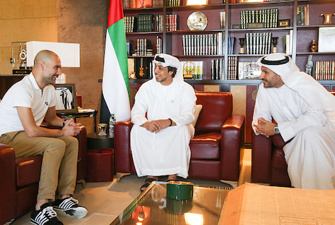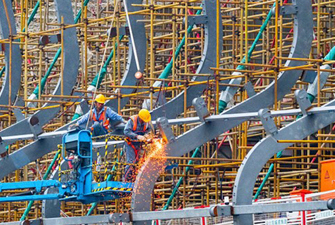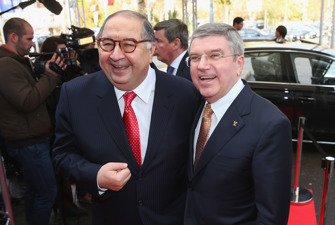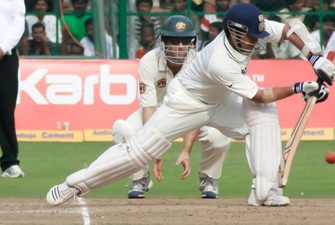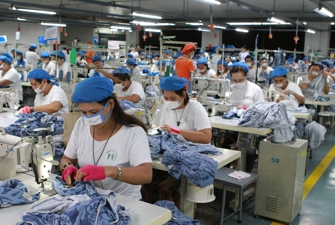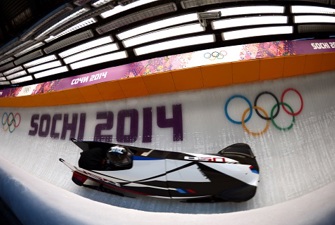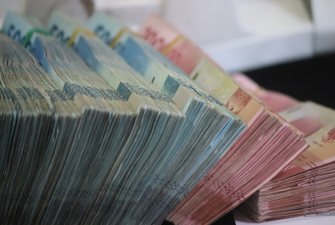Financing Modern Sport in the Face of a Sporting Ethic
Relationships between sport and money are longstanding and necessary: this cannot be concealed in the light of a Coubertanian ideal that is often poorly understood.
From the very first ancient Olympic Games, sporting events have required human, material and financial resources to be mobilised. When sporting practice has a competitive purpose, it offers a spectacle, the organising of which necessitates finance, and the promotion of which can bring in substantial income. Sporting practice itself has become an act of consumption, bringing in its train expenses for sports clothing goods, hiring equipment, entry tickets, and the price of transport - especially for staffed, maintained, secured, and priced sites, and particularly for outdoor and country sports (Andreff, 1992; Andreff and Nys, 1997; Andreff and Weber, 1995).
It is neither abnormal nor amoral that money should circulate in sport, in quantities sufficient to develop the practice and the spectacles. Sport also offers markets for numerous viable economic activities. Commercial companies, banks, associations and the media have found an interest in financing sports spectacles, now highly professionalised not only for the prime purpose, but also for various by-products (sport on TV, in the press and electronic media, exhibitions, and merchandising), and the use of its image (publicity, and sponsorship).
Such trends cause sporting organisations (clubs, leagues, federations) to transform themselves from their original non-profit purposes to commercial associations, and sometimes to shareholding companies. Ultimately, in imitation of the American model of professional sport, the sporting spectacle becomes submitted to a wholly financial logic; such trends have developed in Europe during the course of the 1990s. Each year direct (shareholding) or intermediate (bank) finance becomes a more prominent feature of sport.
When financial logic is imposed on sport, the ethical risks deriving from the sport-money relationship grow. If it is necessary to gain money by any means, then all means are acceptable for winning competitions, such victories becoming the source of finance directly (from prizes and bonuses), and also more recently indirectly (from publicity fees, payment for rights of TV transmission, contracts for image improvement and sponsorship). If one lets finance and the market guide sporting practice and events, the probability rises rapidly of them being invaded by immoderation, cheating, excessive pressured conditioning of athletes, doping, falsification and concealing of results, and even the premature death of players.
Is that to say that finance alone is responsible for all these perversions, more and more frequently in professional sport? By no means.
However, just as the unbridled globalisation of finance has lead to a monetary crisis, so in its search for capital growth, the unregulated penetration of money in professional sport risks sport losing its ethical sense, being transformed into a mere spectacle offered by professional performers, in which sporting values are less and less present. More seriously, the evermore internationalised financing of professional sport, if uncontrolled,could embroil it in the laundering of dirty money, under-the-table transfers of dubious capital, corruption and embezzlement, as in other areas of international business.
In this confrontation between the logic of finance and the ethics of fair competition in sport, the latter must be preserved by the application of a double regulation, the one seeking to curb the uncontrolled lust after money of sports organisations, the other financially guaranteeing the good conduct of the major financial investors in sport. Otherwise, by default, the power of finance could choke and kill the commercial value of sport as a spectacle, and through capital flowing directly and indirectly through the system, at base affect the financing of mass sport/Sport for All.
Facing a growing commercialisation of sport activities, sporting ethics is a multi-faceted notion. On the one hand, it is based on the enforcement of rules regulating sports practices and ensuring that participants conform to the same rules, that all competitors play on the same footing so as to get a fair game on the pitch, and as a result maintain the so-called glorious uncertainty of outcome which is usually considered one pillar of the credibility of sports competitions. From this point of view, commercialisation should not disturb or circumvent sporting rules and regulations.
On the other hand, sporting ethics refers to a system of moral values, among which are the fighting spirit, fair play, seeking of health (physical, mental and moral), avoiding doping, and looking for technical and aesthetic beauty in sports practice, equality and fellowship of human beings (at least on the field of play), a social use of time, surpassing oneself, even a spiritual experience, a humanist ideology and philosophy and a deontology (for sports professionals).
In this respect, sporting ethics pertains to a behavioural logic, a sporting spirit, usually fairly disinterested in financial matters, or at least not overly greedy.
From this point of view commercialisation should definitely not spoil or endanger the very existence of either the combative sporting spirit or the financial disinterest by superseding them with a strict logic of personal money making or maximising profit.
1. The financing of mass sport: or money in the service of ethical sport
A great part of the practice of sport is a leisure activity, a mass activity, a stranger to all put up as a spectacle and to seeking for financial gain.
Some money (taken from the personal budgets of the players or other sources) is of course necessary to finance sport for fun, organised or informal, but in this context money is in the service of sport. It essentially is composed of the expenditures of households.
In 1995, sporting expenditure of households in France reached 43 billion francs, divided into 46.1% for services (subscriptions, lessons, entry fees, insurance, hire and repair of goods), 44.3% on shoes and clothing, and 9.5% on buying equipment.
There is a sports market of a scale sufficient to attract industrial and financial investors. In 1997, French sports expenditure reached 93.5 billion francs, of which 46.2 bn were household expenses, a growth of 7.4% from 1995. The total is obtained by adding to this spending by communes (27 bn), the State (9.6 bn), enterprises (6 bn), the Departments and Regions (3.3 bn), and by the media (1.6 bn).
One can see an obvious fall in the element of public finance in this period. This was due in part to the disengagement of the State as sports budgets grew, but less quickly than the growth of private finance. This tendency is indirectly confirmed in France by the stagnation of the budget of the Ministry of Youth and Sport, at 0.18% of the States expenditure, a decrease from its maximum at 0.27% in 1982. For the other part, above all one can see a clear reduction by local authorities in their financing of sport, their spending growing more slowly than all other sources, even than that of central government. The communes had acted as a motor in sport finance until the beginning of the 1990s (Nys, 1991). This double tendency of relative disengagement of the state centrally and locally has been observed in recent years in most European countries (Andreff, 1996, Andreff et al ,1995).
The share of private money flowing into sport grew from 50.9% in 1990 to 57.5% in 1997, this growth being attributable wholly to the increasing household expenditure, while that of companies remained roughly constant. While business spending grew by 36% in seven years from 5.6 to 7.6 bn Francs, principally due to spending by the media a growth of 181% from 0.55bn to 1.55 bn Francs in 1990-97, while other business spending grew only by 20% in the same period. This increase was due more to sports spectacles than to Sport for All. This is corroborated by the growth of spending on sports services by households from 7.4 bn to 19.8 bn Francs during 1990-97 (or 168%), to the measure that several of these services are event-related (ticket sales, pay TV, prizes and bonuses in sport, etc.).
The fact that household purchases of sport services grew barely less quickly than the money injected into sport by the media is scarcely a coincidence. The financing of sports infrastructure (stadia, sports hall, swimming pools) attracted modest private finance, between half and two thirds coming from the communes (Bourg and Gouget, 1998), with central government contributing a goodly part of the rest. Only equestrian centres, golf courses and facilities in urban leisure centres have attracted substantial private money.
The financing of mass sport in Europe shows great similarity from one country to another, with some notable variations, such as the Swiss on the one hand, and countries with long-established public sports systems on the other. According to the study undertaken by the Council of Europe (Andreff, 1994; Andreff et al, 1995), sports expenditure represented between 0.56% and 3.47% of Gross Domstic Product, with numerous states around 1%; private spending (including that of households) above all prevailed. In all the countries studied, except Portugal, households contributed the largest part. This West European model of sports finance (Andreff, 1996) is based on the spending by choice of households, that is a logic of the market where participants and spectators are considered as consumers of sports goods and services. Nevertheless, in this model public finance is not negligible, in particular the input of local authorities. The financing of sport by business, after the American model is everywhere limited in Europe.
The more sport is immersed in a market economy and becoming more dependent on private money, the greater the probability of money from unknown sources, eventually deviating from the objectives supported by sporting ethics. It is rather that the rising amounts and growing temptations bring the risks of embezzlements and diversions of funds to the well-endowed sports. The growth of private financing sources upsets the structures of mass sports, notably in the federations and the clubs. "They cannot help but stir up covetousness and shake the disciplines which the federations exercise" (Lipieri, 1996). They tend to separate, at least at the level of financial planning, the practices of mass sport and of professional spectator sport. They favour the development of new competitions and parallel competitions organised by the commercial sponsors, and undermining those of the federations. The reaction of the federations has been to not allow to leak away the revenues of the events they own and over which they exercise control, while the media success of a sport is often correlated with the volume of their associative, that is, mass sport, and with the efforts to select and train winning athletes, one of the federations key missions.
Besides, the practice of mass participation furnishes the foundations of excellence in most sports. In any case, the sporting federations are involved in commercial and financial acts in the whole range of their sport for all activities, today being seen as an act of consumption. Winning new licences implies a marketing approach occurring between the federations in a competitive game. Federations have created external leagues with their own juridical status ( as in football, basketball, volley ball, ice hockey) and internal leagues to manage their own elites (handball and cycling in France). This move towards the commercialisation and professionalisation of sporting structures is accompanied in general by a minimum of controls (at least so far as accountability and internal audits are concerned). 1.
In less professionalised sports, the influx of money with less transparency has led to a financial crisis from malpractices (Barberi, 1998). Such trends have lead some people at least to think that professional direction is needed for at least some small federations. Others assert the idea of a triple reform: to pay salaries to the chairmen of federations in order to fight illegal payments from black boxes; to make a committee chairman responsible for the deficits of a federation; and to isolate commercial operations from sports spectacles and mass sports activities. In any case there is urgency to modernising the regulation of this new profession that has become an activity of sports directors as sports commercialise and become spectacles drawing in major sums of money. Without this there is a danger that the money coming to the service of sport will enslave them and individual sportspeople in a fashion that is opportunistic, often tactless and sometimes dishonest. In all such cases the ethic of sport will suffer.
2. The financing of professional sport: or sporting spectacles in the service of money
2.1 The penetration of sports spectacles by financial interests
After World War I sports spectacles really began to develop (Bourg, 1996), and created a new form of sports financing: spectators paid for entry to buildings and sites where high level sport was displayed (Andreff, 1981). The mediatisation of sport, solely by the press before 1914, then by radio, and after the 1936 Berlin Olympic Games by television, has added new forms of finance for sport: rights of quotation, of transmission, and of using an image or logo.
There is also the economic internationalisation of sport (Andreff 1988, 1989), contemporary with the first signs of globalisation, which sealed deeper and lasting relations between sports spectacles, industry, commerce and finance. Henceforward, a sports spectacle offered a new scale of publicity and the most profitable of service activities. The major source of financing sport has switched from participants (by 1914) to spectators (around 1980), and since to businesses, sponsors and TV networks. With the measured audiences for TV transmissions of hallmark sports events (the Olympic Games, Tour de France, World Cup football), sport has become a privileged vector of communication for businesses wishing to conquer new markets, improve their images, and their international recognition. As for professional sport in Europe, its finance rested on the 3 Ss until the 1980s: spectators, municipal subsidies, and sponsors, with a not negligible element arising from the media. In the 1980s and 1990s, this structure evolved: the media became an essential support, and new sources appeared businessmen and industrialists investing in professional sport, bank loans, merchandising, and in some European countries, the appeal to the population to invest by way of the introduction of some clubs in the stock market.
That professional sport attracts spectators and turnstile receipts can be swiftly illustrated by the case of football. In the course of the 1997-8 season, each Division 1 match attracted on average, 31,160 spectators in Italy, 31,112 in Germany, 29,189 in England, and 16,572 in France. This inflow has grown in recent years: in France the average gate in D1 was 14,212 in 1996-7, 10,728 in 1989-90, and 9825 in 1980-81. The annual average revenue in a season was in D1 between 2 and 2.5 bn Francs, and in D2 between 450 and 500m Fr, of which 20% and 15% respectively originated in match receipts. Taking into account, however, the magnitude of players salaries, transfer fees and external costs of a professional club, and income from spectators does not assure a clubs financial survival. TV rights and sponsors contribute more than spectators: for D1 clubs in 1996-97, TV fees represented 25% of income, sponsors 20%, local authorities 11% and transfer fees20% (in D2 the equivalent figures were 28%, 25%, 21%, and 7%).
Taking together the recent growth in football as a spectacle, the TV and sponsors rights, nonetheless has been matched by a particular inflation of salaries provoked by fierce bidding to recruit star players, which may well lead the sport into a financial crisis. But the strict control of the management of professional football clubs, launched in France in 1991, is an example of a successful financial stabilisation of a professional sport. The number of professionals employed has been limited by the DNCG to 21 players per club in D1 and 15 in D2. The global balance sheets of D1 clubs in 1989-90 was a deficit of 619mFr, compared with 168mfr for D2; three quarters of these clubs were in the red. By 1994-5 D1 had become a beneficiary (of 60mFr), D2 in 1996-7 (by 1.3mFr), a year in which D1 showed a profit of 363 mFr. Such a financial redress took place under the leagues threat of relegation to an inferior, non-professional competition, irrespective of the standing they achieved in the Championship, a threat that materialised for some clubs. One can draw three lessons from this experience: a financial logic is imposed on the sporting logic; a sporting spectacle is clearly put at the service of a salaeable professional sports product; and, a return to profit is a necessary (but not sufficient) condition to the outcome of privatisation through a stock market flotation. The transformation of clubs to shareholding companies does not escape this rule of thumb.
Sport spectacles evidently attract finance from the media, especially TV, which desire to reach large audiences and the promise of significant publicity, for which they must acquire the rights of transmission (for a more detailed economic analysis of broadcasts and retransmission, see Andreff et al, 1987; Bordes-Marcilloux, 1981; Bourg, 1991; Bourg and Gouget, 1998). The abolition of the public TV monopoly in 1984-87 and the concurrent appearance of several private networks have raised the price of transmission rights to a level where they are the most important source of finance for professional sports. A similar trend is visible worldwide: The value of the TV rights for the Olympic Games of 2004 has multiplied by 2.6 from those for 1988. The rights of retransmission represented 40% of the total income of the Atlanta Games or the ParisDakar Rally, 34% of the Barcelona Olympics, and nearly 30% of the Tour de France and the Roland-Garros tennis tournament. In France, deregulation of broadcasting provoked a fiercer bidding between the networks for football coverage, and even an agreement in June 1987 between five of the chains to divide the football broadcasts did not call a halt. It required the signing in 1992 by all the networks of a Code of Good Conduct drawn up by the Higher Audiovisual Council (CSA) to put an end to the savage competition and to maintain the viewers right of access to information. This right had been put into question by individual acquisition of rights at great cost by the networks. The Code allowed the networks to
- transmit extracts of up to 90 seconds in the news and magazine programmes of sports events for which a competitor had acquired exclusive rights;
- broadcast longer extracts at a payment pro rata to the competitor;
- authorise regional or local retransmission by a secondary broadcaster; and to
- forbid exclusive contracts between the networks and athletes.
In other words, it introduced rules seeking to reconcile the exclusive rights to events bought by the networks and the normal rights to information of TV viewers. It also envisaged avoiding the creation of agreements, such as those that ruled for several years between Darmon, TF1 and Canal plus to prevent sharing the broadcasting of European Cup football matches (Maitrot, 1995). In 1996, the European Parliament pronounced that a right to exclusivity cannot deny a large part of the public of a member state the right to follow a sporting event live and in clear on the small screen. However, the European directive of 1989, Television without frontiers in Article 3b created in 1997, did not guarantee that certain events would not one day be retransmitted in a coded, Payper-view form.
The networks devoted a growing amount of air time to sports events, which exceeded 1,946 hours a year in 1993 for the general networks (Canal Plus, FR2, FR3, TF1, M6). It grew to 2,788 hours in 1998, to which must be added more than 600 hours broadcast by Eurosport and AB Sport. The most broadcast sports in 1998 were all professional, in decreasing time coverage- football, tennis, basketball, cycling, rugby, motor sports other than Formula 1, golf, ice hockey, athletics, and Formula 1. The first five of these together account for about 60% of all annual sports coverage, with football and tennis together taking about a third. However well regulated, the competition between the networks continues to enrich the same privileged sports, but the networks tend to specialise in certain sports. As a result of the overbidding, televised sport is in deficit, but since the competition is so intense, the networks consider such programmes to be necessary to maintain their images, demonstrating their unwillingness to cede part of the market to their competitors. The situation requires better regulation, insofar as it is not surprising that profit-seeking triggers the development of Pay TV programmes, aided by the introduction of digital TV and the entry of new commercial networks. Thus the next soccer World Cup is at risk of being available only to some TV viewers, and only subscribers to satellite channels may be able to follow the whole series of matches.
This forseeable fragmentation of the audience began to alarm the advertising/publicity agents and sponsors, who feared that the segmentation of broadcasts would transform sporting events into flops once they could only be followed by a limited number of viewers. On the other hand, such agents and sponsors are needed to make great contributions to financing professional sport. As a vector of global communication, sports events excite the greed of the publicity agents, the sponsoring businesses and the TV networks simultaneously. In attempting to privatise broadcast sports images, the latter threaten the revenues and the usage of those images by the sponsors. Just as Sport for All is necessary to preserve the credibility of sporting values, the sporty image for All is necessary to maintain the attractiveness of sport to those who invest in it for commercial ends. In France, the cost of sponsoring sport was valued at between 2.5 and 5 bn Francs, depending on the source of the estimate. More than 114 bn frs were invested in sport by publicity agents and sponsors worldwide in 1998. Sponsors not only seek to see their brands/logos/ trademarks on the screen during sports transmissions, they expect that their products or services will be used in the framework or environment of those events (Bordes, 1992). The outcome of these trends is a growing competition between sponsors and TV networks which is difficult to regulate. But regulation becomes necessary, otherwise competition can kill the infatuation of TV viewers for sport. Already the networks and the marketing agencies seek to band together to control the sports shows/industry. Publicity agents will not be put outside the market by the media.
Professional sports clubs have become well aware of the value of their images, and have begun exploiting them for appropriate profits. While this practice is less well developed at the moment in France than in other European countries, merchandising is making its appearance in football a commercial strategy selling all sorts of goods drawing on the name of the club (gadgets, clothing, gifts, childrens knapsacks, bags, watches, perfumes, etc.), or selling a licence to use the logo (e.g., Nactalia Gervais using FC Nantes for its bottles of vitaminised milk). Milan AC proposed 200 products, PSG 100; Bayern Munich drew in 100mfr. a year from merchandising and Manchester United gained more revenue from this source than from ticket sales. Thus professional sport has found revenue sources of its own, complementing finance coming from events, media and sponsors. These funds pose a problem of competition felt to be unfair by the sporting goods enterprises, especially those in the national Syndicate of sports facilities and services suppliers.
The final development in the finances of sports events, notably in the last decade, is the widespread entry of industrial and financial tycoons in the management, financing, and ownership of professional sports clubs in Europe, as already well known in the USA. This phenomenon is not entirely new, but has accelerated markedly in the 1980s: these deals - Casino (for Saint- Etienne), Matra-Hachette (Racing in 1982), the Mirror Group (Oxford United in 1982 and Derby County in 1984), Fininvest (Milan AC 1985), BTF (Olympic Marseilles 1986), Amstrad (Tottenham Hotspur), Canal Plus (PSG, Chateauroux 1981) have propelled Geoffroy Guichard, Jean-Luc Lagardre, Robert Maxwell, Silvio Berlusconi, Bernard Tapie, and Bernard Brochand to the head of veritable finance-sport complexes. For example in 1992, 25% of the capital of Bernard-Tapie Finances (BTF) were held by Credit Lyonnais, Assurance Gnrales de France, Banque nationale de Paris, and the Bank of Tokyo, and the German sister company held 95% of the capital of Adidas after a round table investment of 20.05% by the Pentland Group, 19.95% by Crdit Lyonnais, AGF and the Bank Worms. Henceforward, like American professional sport, European professional football is subject to the outcomes of financial restructurings, mergers and acquisitions. In 1996 Olympic Marseilles was taken over by Adidas. In 1997 the City of Strasbourg ceded its soccer club to the multinational group IMG-McCormack which purchased the holdings of minority shareholders; after this, IMG negotiated the purchase of the Hungarian club Ferencvaros. In 1998, Canal Plus became the majority shareholder in the Swiss club Servette of Geneva and the Norwegian company Aker RGI, already owner of Molde FC, took ownership of Wimbledon. One can see a real problem looming about the authenticity of a result of a European Cup match between Molde and Wimbledon!
The formation of the most important financial/media/ sporting group could well result from the actions of Rupert Murdoch , the Americo-Australian press baron, in response to those of Ted Turner (Time Warner), proprietor of several sports clubs. In 1995, Murdoch, having tried unsuccessfully to buy the TV rights to the Australian Rugby League, created a professional rugby Superleague on its margins. The court in Sydney, however, gave a judgement preventing the launch of this new "product" (Championship). This did not hamper the successful introduction of a Super 12, a competition between teams from the South Africa, Australia, and New Zealand. This championship of the southern Hemisphere has since become the world reference point, partly because of the excellence of its play, and partly because of the media repercussions assured by BSkyB and the other press organs Mr Murdoch owns. In 1998, Mr Murdoch bought, for $350m, the legendary Los Angeles Dodgers team, and so, despite the opposition of Time Warner (Ted Turner), made his entry into the American baseball domain controlled by other multinationals. (In addition to the Atlanta Braves by Time Warner, Disney controls the California Angels, the Tribune Company the Chicago Cubs, and Interbrew the Toronto Blue Jays).
The global financing of sport develops by strategies like that of the English company ENIC (English National Investment Company - of which the main shareholders are the Briton Joe Lewis, Bahama-based, and the South African group Richemont-Nethold, producer of tobacco, luxury goods and media). ENIC holds a portfolio of shares of the clubs AEK Athens, FC Basle, Glasgow Rangers, Slavia Prague, and Vicence. A similar strategy was developed by Murdoch, as evidenced by the attempt of his company NewsCorp in September 1998, to buy the richest football club in the world, Manchester United, as well as its TV network, MUTV. The English group Carlton, owner of a regional TV network for London and the south and of Arsenal FC, is equally present in basketball, baseball and ice hockey, and competed with Murdoch in the auction to outbid him for MUFC. Professional sport has become a financial battlefield on a world scale. Fearing an abuse by BSkyB of its dominant position in the TV rights market, the British government passed the issue to the Monopolies and Mergers Commission just after Murdoch announced that he owned 44.6% of the share capital of the club. This suspended the purchase offer (and subsequently the purchase was blocked as anti-competitive). Under a globalising effect, the financial control of sport is putting genuine competition in danger, and calls up regulatory interventions. These grand strategies of major media-financial groups are motivated entirely by the search for profit and resemble those of global financing.
2.2 The risks of sport being submitted to a purely financial logic
This penetration into sport of major financial interests carries risks. Above all, sports spectacles are put at the service of money, and not the reverse. The risk that professional sport will leave the federal system cannot be under-estimated or ignored (Musso, 1998), but its legitimacy consequently also risks suffering from its isolation from mass sport, with a negative effect on its attraction as a spectacle and on its gate receipts. The other danger, already more than evident, is one of the media and sponsors taking the power, certainly of financing and possibly of organisation, resulting in a loss of power by the Federations what the Prince de Merode, IOC member, has called "an inadmissable abdication of sporting power."
Some recent developments in European football illustrate this proposition. The Bosman affair, and the judgement of the European Court of Justice of 15th December 1995, has brought back into question the rules of UEFA (European Union of Football Associations) as in contravention of Article 48 of the Treaty of Rome; in particular those limiting the number of foreign players in professional teams, and requiring compensation for trans-fers of players from a club in one EU member state to another. The alignment of the rules of sport and of the Communitys law is open to dispute, but this modifies the labour market for footballers, easing and opening up their mobility, and weakens the regulatory power over the market of UEFA, as well as its organisational and disciplinary reach over the major European professional clubs.
Although UEFA has several times tried to resist the effects of the Bosman decision, the great clubs have given support to Jean-Marc Bosman in his legal action against UEFA, which he accuses of taking away his freedom of movement as a worker, and the Liege club in shackling his professional mobility. Besides the human rights aspect, in economic terms, the rich clubs have won in effect a liberalisation of the transfer system thanks to their financial capacity to attract the mercenaries (stars), and the players have gained total mobility. It remains to be defined who can check the overbidding or even the monopoly of the great clubs in the players market, or the growth of their salaries. (It can be reported that this was the cause of a financial crisis in French football, and which led to an austerity plan; excess salaries ,created by clubs overbidding each other, had brought about a similar crisis in all the US professional sports in 1960-61, and led to a strict regulation of the sports business in the haven states of the free market see Andreff et al 1987, Neal 1964, Noll, 1974).
The contest for sporting power through the financial muscle of the great clubs has other reverberations. One can note that all the finalist clubs in UEFAs competitions come from the eight countries that are powerful members of UEFA, which does nothing to advance the glorious uncertainty inherent in sporting competition. To avoid the premature elimination of a great club on the result of a single match, UEFA modified the rules of the European Club Cup championship in 1991-92 by introducing a system of pools, under pressure from the rich clubs. Apart from the fact that the power of great clubs has less chance of being contested over six matches, the new system guaranteed these clubs increased revenues from an assured longer stay in the competition (600mFr distributed to 16 clubs in the 1996 pools). Renamed the Champions League in 1994, it underwent another change in 1996, when the number of clubs in the pools was raised to 24, and opened to the first and second-placed clubs in the eight best nations as shown by UEFA indicators. This situation is contestable according to concepts of fairness, whereby the second club in Italy or Germany is selected above those that win the championship in Norway or Albania.
In September 1998 Media Partners, supported by the audiovisual magnates Murdoch, Berlusconi, and Leo Kirch, proposed a project for a European Superleague financed by the manna of TV rights , and gathering the 36 richest clubs, of which 18 foundation clubs would be selected on the basis of their performance over the previous ten years (notably Liverpool, Manchester United, Arsenal, Ajax Amsterdam, Borussia Dortmund, Bayern Munich, Paris St Germain, Olympic Marseille, Inter Milan, Milan AC, Juventus of Turin, Real Madrid, FC Barcelona, Benfica of Lisbon, Panathinaikos Athens, Galatasaray Istanbul). The Superleague could generate more than 12 bn fr a year, 30 times more than the Champions League. The financial guarantee of the project was given by the bank JP Morgan. Audit support was provided by KPMG and Deloitte Touche. If the project succeeded it would totally rob UEFA of its power over the great clubs.
The response of UEFA was to forbid the selection for national teams of any players involved in the Superleague. It found a weighty ally in the form of the European Commissioner for competition who had reservations over the redistribution of TV rights and their duration (six years), but not over the monopolistic situation of the 18 foundation clubs. Eventually, in October 1998 UEFA proposed its own Superleague project with 32 clubs. The countries with the best UEFA indices would supply the clubs which qualify each season (but they would qualify on the field in contrast to the 18 Media Partners foundation clubs). The financial dowry would be 3.2 bn fr thanks to TV rights for three years; those who signed up would be the subject of an equalisation fund between the clubs.
The major clubs eventually accepted this project (less profitable than that of Media Partners but more so than the Champions League), on condition that UEFA gave them a say in deciding the format of the European Cup, arrangements for TV rights, and marketing of the competitions. One can forecast that the major clubs will use their influence and impose their views, regarding a new project like that of the Superleague (such projects exist on paper- see Hoehn and Szymanski, 1999). So, where does the power of sport lie in the face of financial interests? Who can prevent a group of clubs owned by the same financial interest (like ENIC, Parmalat or Canal Plus) not being drawn together in the Superleague?2 How can one be sure that the result is independent of the financial interests involved in the game? How far do these financial manoeuvres meet the interests of paying spectators? The proverbial infatuation with football of English spectators has lost its vitality since the price hikes favour affluent spectators and the hospitality box holders reserved for VIPs (Very Important Persons), whose presence coos down the ambience of the stadium. Also, Manchester Uniteds supporters did organise themselves against Murdochs takeover bid.
The determination of sporting results by the size of sums of money is not a new matter in sporting events, but with the involvement of financial groups, there are risks of an unknown magnitude. In the absence of sufficient money, clubs, teams, and athletes taking part without a small chance of victory cannot field a team of stars with as sophisticated preparation as the richest competitors. There is a marked statistical correlation between the frequency of sporting victory and the budgets committed to professional players, and this is shown most strongly in the case of football (Bourg, 1983, Bourg and Gouget, 1998). The financial and sporting inequality between clubs results in big differences in professional player revenue that challenge social justice even more than the ethics of sport (Nys, 1994): may the best man win now applies to the personal wealth of sportsmen and women, and is based on defeating financially poorer athletes.
The penetration of financial interests in sports events makes it necessary to change the statutes of professional sports clubs. In December 1997, the French Union of Professional Football Clubs declared itself in favour of transforming the clubs into Socits Anonymes (SA- joint stock companies), to give greater flexibility to entice private investors ( and thus attract enough money to draw back expatriate players who had moved to countries with lower social costs in the wake of the Bosman judgement), and at a second stage to prepare the great clubs for stock market quotation. For the moment, the Ministry of Youth and Sport indicated that certain clubs could adopt the structures of SAs, subject to certain requirements about financing, budgets, and minimum capital, a change that would be framed as a future sports law. 3
In other European countries, such legislation already existed: Ajax of Amsterdam became a joint stock company in February 1998, and entered the stock exchange in May, as did Atletico Madrid and Lazio of Rome and in 1999, Bologna and Milan AC. In the UK, following the growth of their profits, the Stock Exchange value of quoted clubs rose by 700% between 1992 and 1996, only to fall in the financial recession of 1997. In 1996, the investment in Manchester United shares was more valuable than in British Telecom, or in buildings. Investment funds were created incorporating the names of clubs, such as the Football Fund Singer and Friedlander and a speculative fund Sports Partners, created in 1996. In France, Momentum Premier Sports Fund is a football clubbased fund aimed at professional investors. Tocqueville Finance launched Olympe in December 1997, the first fund open to the general public on both European and American stock exchanges; it embraced not only football clubs but manufacturers (Adidas, Fila, Canondale, etc.), and management and marketing companies in sport (Darmon). Other professional sports were also preparing to enter the stock market, namely Formula1 with the Company Formula 1, which brokered a loan of $ 2bn in October 1998, anticipating a share flotation around 2001.
The case of multiple ownership of clubs in different countries by the same financial group is likely to grow, and to oblige a strengthening of the rules about ownership as affecting these clubs involvement in European competition (in certain countries, on ethical grounds, the football league had forbidden the establishment of links between clubs, as in France where it stopped Arsenal from buying AS Cannes in 1997). This eventuality, as well as the trends traced above, has the effect of drawing the European and American model closer together, with one essential difference: the professional clubs on the one side and the professional players on the other (post Bosman) are putting into train the undermining of existing national and European regulations in which sporting power resides.
This is a double pressure for liberalisation, like that which put American sporting finance into crisis in 1960-61. The result then was a professional sports sector explicitly avoiding full competition, after a derogation of the Anti-Trust Laws was achieved. Each league functions under this shelter from competition, where a fixed number of clubs appears equal to the number of franchises offered, and none can be promoted or demoted to another division on the basis of sporting results insofar as divisions are geographical, and no new entrant unless a franchise or a club is given up by its proprietor. This is not the place to give an economic analysis of the American model of professional sport (see amongst others Becker, 1994; Demmert, 1973; El Hodiri and Quirk, 1971; Neale, 1964; Noll, 1974, and Scully, 1995; for comparisons with the European model see Kesenne, (1996) and Primault and Rouger (1996). But in simplifying greatly, one can draw out two paradoxes.
First, a sporting spectacle is a joint product of the competitors in their confrontation; its quality depends on the entertainment and the uncertainty of result (notably of upsetting the expected form), and on what is at stake in the confrontation. Thus Sloanes paradox: if in the same competition one allows the winners to use their financial gains to strengthen the team by buying players, while the beaten get weaker and enjoyment, stakes and uncertainty are reduced, this will depress the number of spectators and the ticket receipts across the league. The professional sports in the USA have a regulation for assigning new players in favour of the lower-ranked clubs to maintain a certain equilibrium between the sporting forces, as well as some equalisation of revenues between the clubs. (Player less than 22 years old, coming out of the High School or university championships as well as players proved in equivalent competitions or foreign players put on a list. From this list- the draft the clubs choose the player they most desire to put under contract, in inverse order to their position in the championship; then in the same order for a second player, and so on).
The second paradox is that, if one leaves each club free to employ the best players available, the over bidding between the clubs is sure to raise the salaries and bonuses, and in a situation of weak gains in productivity, to trigger indebtedness of clubs and leagues and a risk of financial failure and costly licencing of players, strongly Trades Unionised in this context. In American sports, the problem is controlled by a strict regulation over salaries the salary cap (a ceiling on the total salary bill per club).4
The combination of rules responding to Sloanes paradox and that of salaries bring about an astonishing result: the media turn aside from sports where uncertainty or sporting entertainment are weak, or which are in financial difficulty or debt, or where there is conflict between the players and club owners (as in recent years in US basketball), and prefer wellregulated sports! Vis--vis the latter, the media are disposed to assign exclusive rights enriching the clubs in the measure that they limit their salary costs, and their possibilities of hiring players. The accepted rules form a triple monopoly of the professional leagues over their events, the media over their broadcasts and a syndicate of players which is in contravention of anti-trust laws. The sports business in the USA, having been exempted from the application of this law by the Sports Broadcasting Act of 1961, is one of the most profitable. In the absence of such regulation of monopolies, it is menaced by a new financial crisis similar to that of 1960. In Europe the debate is engaged to discover whether the evolution of professional sport should follow the American pattern (Hoehn and Syzmanski, 1999; Musso, 1998; Primault and Rouger, 1997). It is a debate that raises issues about the profitability and survival of the clubs in a context of a free market for players, media coverage and free access of the clubs to sources of finance. One must think about a good application of anti-cartel laws to professional sports, considering current FIFA, UEFA, and EU rules. The organisation of sporting uncertainty for the purpose of profitability will shake every defence of sporting ethics. The suppression of competition by monopoly, to reduce the risk of financial disaster, runs against every spirit of economic liberalism. One or the other, however, is necessary for professional sports to attract the finance necessary for them to function. The rules of sporting competition are, by their nature, contradictory to those of market competition.
3. The side effects of the sport- finance complex : or arriving at the laundering of dirty money
In Europe at least, sporting events are often the subject of a financial battle without rules or referee, because they have become a commercial product for the TV networks, and because they generate enormous profits and attract businessmen and intermediate financiers. The ultimate aim is to win and above all be \"seen on TV\" so as to gain money (Maitrot, 1995). From these objectives flow many side effects of sport, in which finan-ciers take an interest, direct and indirect, and which engages the morality of professional actors. The risk is that these side effects may call into question the authenticity of sporting performances and results, and even kill the attractiveness and profitability of events. If its credibility declines, the risk of investment in sport may become unacceptable to banks, media, sponsors, and financial groups who contribute to the financial comfort of contemporary professional sports events.
A first side effect, at first sight the least serious, is that the penetration of financial interests in sport provokes disfunctions in sport. As long as the latter are not too great or too visible, as long as they are pushed about by propaganda and fashion, they will not degrade the image or credibility of sport. But on the other hand, their accumulation and growing frequency is dangerous for sports attraction and audiences. As already analysed, such perturbations affect sporting events when media and financial interests are present. Thus:
- the timetables of events are adjusted to the needs of prime time TV audiences
- the Olympic Games programmes is adapted to the expectations of broadcasters
- the management of matches (half and quarter time breaks) is more and more the outcome of demands of advertising and financial agents
- the sporting rules are modified to make events more media-friendly (e.g., direct elimination in archery, new rules in volleyball)
- courses are made more testing to dramatise the athletic effort (the number of climbs or kilometres in stages in cycling)
- TV networks programme the moment when a champion hands over his title (in boxing)
- TV puts events into a hierarchy, giving preference to those with the greatest audiences and advertising incomes
- TV creates exhibitions, spectacles without real challenge or enjoyment, and events parallel to the official ones, and
- financial interests influence sporting practice and tactics (enhancing defensive tensions, faults, and disputes ( Bourg, 1994; Hourcade, 1986).
Sporting ethics are not undamaged. The law is sometimes turned by financial interests, and not just the rules of sport. Sports sponsorship for a long time has distorted the law prohibiting advertising of tobacco and alcohol, in France until the Evin law in 1991. The infractions of this law have multiplied, notably by private networks, but also on the occasions of matches by the national football team. During the World Cup of 1998, one sponsor, the branded beer Budweiser, obtained a derogation of this law, for transmitting coverage of matches in stadia where it had placed advertisements.
A second side effect resides in embezzlement, cheating in sports, certain forms of trading and violence that attract financial gain; they grow with the increased volume of sporting finance. This phenomenon is well described (Andreff, 1988; Bourg, 1988, 1994; CCPR, 1983). Such trickeries encompass the troubled role of intermediaries in the transfer of players, the faked accounts of Olympic Marseille or Girondins of Bordeaux, as well as Jean-Claude Darmon being charged with abuse of corporate resources, and in falsification of records and accounts. Clubs use black bags when transferring overseas players (sometimes fictitious). The chairmen of AS St Etienne in 1982, Girondins of Bordeaux in 1990, and Sporting of Toulon in 1994 were condemned for abuse of social benefits. Meanwhile Olympic Marseilles chairman had misappropriated 101mfr between 1987 and 1993 and was condemned to 18 months in prison in 1997, which in 1998 was converted to three years suspended sentence on appeal. Means of embezzlement were false invoices, fictional purchases of players, hidden honoraria and intermediate payments regarding transfers, and transfer of funds to tax havens. In April 1998, the former chairman of Paris St Germain was pursued for misappropriation of 22mfr between 1986 and 1989, and in August Alain Aflelou for concealing an international monetary swindle while he was chairman of Girondins of Bordeaux.
Money and bonuses given to the victor, and media gains following a victory have overcome fair play and respect for opponents and caused the rules of the game to be forgotten, changing sporting competition into combat for a struggle for dough, where brutality overbears honesty (Nys, 1994). Sanctioning violence on the pitch spreads it to the terraces where confrontations of spectators may lead even to death (at Heysel in 1985, and Sheffield in 1989). Trickeries to gain an advantage are too numerous to be listed here (use of the hand to get a goal in football, but also collusion between racing cyclists, accidents provoked in Formula 1, etc.). Evidently the most serious malpractices are committed outside competition and events, by the use of artificial ways of improving performances, in particular systematic doping and use of narcotics under pressure of substantial rewards, or pressure from media, sponsors or organisers.
Doping is not new in sporting competitions: in the ancient Olympics athletes consumed large quantities of meat to increase their strength, which was forbidden and illegal. When large sums of money are at stake, substantial sums must be devoted to elaborate scientific research and the discovery of doping innovations. For thirty years, a technological pursuit has engaged laboratories, medics, and pharmacologists to prepare new ways to detect and then control hitherto unrevealed methods of doping; each year a host of new preparations overflow onto the list of banned substances (Andreff, 1985; Yonnet, 1998). There is an ever-rising cost of doping which is partly financed by the financial gains from victories and events. In the USA, for example, the trade in creatine (a doping substance legally on sale) by sports professionals exceeds $100m a year. Doping does improve performances, and hence productivity and revenues, and in a liberal, competitive, self-centred society, it is tolerated, if not encouraged. On the other side, doping falsifies results, and represents an unfair way to resolve competition (an ethical problem), but above all it gravely harms the long-term health of sporting professionals. Illnesses provoked by doping, the frequency of injuries due to overworking, even the early death of some champions, and the reduction of average life expectancy of athletes must cause reflection about preventive regulation. This would be to hinder the inflow of so much money into research to identify new doping substances, to enforce rest periods (e.g., by shortening the competitive calendar) and imposing random anti-doping tests.
One must expect then some reductions in performance, and loss of image and finance in the absence of doping. On the other hand, recent revelations of doping by the Italian Olympic Committee (CONI), and in the Italian Calcio (professional football), and the Festina TVM affair in the Tour de France of 1998 put professional events at risk of total loss of confidence in sport and by the sponsors, and investors (Bayle, 1998). Conscious of this danger, several sponsors have decided to take part in the struggle against doping, to which they had been virtuously closing their eyes. But they can no longer ignore the fact that doping mars the image of sports and devalues their investments. Six French teams of professional cyclists have decided to fund an anti-doping laboratory functioning from November 1998. Festina has reduced the salary of riders who had confessed to having drugs by 40%, and by 60% those of Pascal Herv and Richard Virenque who denied guilt, leading to the departure of the latter to another team.
The last side effect is the most disquieting and difficult to prove by scientific or empirical means. This is the drift of sport into the most outright unlawfulness. If it could be verified, it risks the destruction of the established European professional sports system and the flight of honest capital from sport. In effect, corruption entering sport, the payments of illegal money transfers and of laundering dirty money, could lead to "killing the hen that lays the golden eggs" (a trend in English rugby union since professionalisation), and annoy and end for ever the investment of honest financiers. Corruption is not new in sport; what is new is the attempt (and temptation) to integrate dishonesty into the foundations of sport.
Nothing illustrates this better than the strategy of Bernard Tapie in football, the tip of the iceberg being the affair VA- Olympic Marseille over bribing opposing players. As a matter well known (Maitrot, 1995) and under judgement, no more will be said here (Tapie was condemned to 8 months in a closed prison for suborning witnesses).In the VA-OM affair, a black bag was discovered; a system of laundering money comprising international circulation of commissions deposited in cash in open accounts by intermediaries, nourished by the settlement of fictitious loans, and inflated as withdrawals from Swiss banks in Swiss francs (Bourg, 1994). It was plainly illegal. The problem is, it was clearly not an isolated case. One means of enticing an opponents player is to promise to recruit him next season at an alluring salary, or to pay him a hidden advance on the value of his future contract. At Girondins of Bordeaux, as at OM, and other clubs without doubt, some black bag funds were destined for referees. A Swiss international referee was accused in October 1996 for having proposed to Grasshopper Zurich an arrangement regarding a match with AJ Auxerre. The Belgian club Anderlecht was convicted of several corrupt affairs in the 1997 European Cup. In 1996 the law was called in after revelations of corruption in Portuguese football.
In Europe the corrupted palm of sport returned to Italy, England and Russia. Because of the existence of the Totonero (an illegal parallel system to the official Totocalcio where the risks and gains are greater), a large number of games were rigged over several years. Certain players participated in distributing the receipts, and manipulating the results of matches (goalkeepers are in a privileged position to do this). In England in 1997 there was an accusation against Grobelaar, long time goalkeeper for Southampton and Liverpool. The attempted rigging of games in the English championships illustrates the globalisation of financing and corruption in sport: the approaches to throw matches came from illegal gambling consortia mainly in South East Asia, but also Qatar and the Czech Republic.
Russia holds the records in this respect. Boris Eltsine, in using the National Sports Fund of Russia to trade overseas in tobacco and alcohol without paying taxes or excise duty, has turned high level sport into a smuggling system and a network of mafioso trafficking. Russian football has become criminalised, with the consent of the directors, incapable of resisting. Buying referees is a flow of money translated into the fact that, during a clash, all the penalties, however numerous, all the whistles are in favour of the same team. One of the rare honest directors, N.Tolstykh of Dinamo Moscow received at the same time offers of bribery and death threats; he openly employed a bodyguard. In 1997 the commercial director of Spartak Moscow was assassinated in the provinces, shortly after the killing of the chairman of Russian ice hockey, slaughtered while driving in his car. In 1999, a wave of assassinations hit high level sport in Russia, in particular in football and ice hockey. It represents the development of rackets and organised crime in all sectors in that country where money is involved, but it constitutes a serious side effect of sport. Crime in Russian sport internationalises as does the mafia itself. There are some indicators. The most flagrant was the Professional Italian cycling team Roslotto, which employed several riders from the Commonwealth of Independent States (CIS), and in which the main shareholder was the National Sports Fund of Russia (NSF), created by Minister of Sports Chamyl Tarpichev , a friend and tennis coach for Eltsine. His successor at the head of the NSF, Boris Fiodorov, publicly accused Tarpichev of links with the mafia.and shortly thereafter was seriously wounded by a bullet and a knife in June 1996. At one time Roslotto gained a great deal of money from its sporting successes and its international trading with the NSF. Sport lends itself particularly well to trafficking in different currencies in cash form to launder the money for criminal activities. In its 1996-7 report the GAFI (Financial Group for Action on laundering Capital) indicated that illegal gaming including in sport betting and criminal financing were clearly expanding. European sport must take precautions against the risk of being overrun by dirty money.
4. Conclusion: sporting ethics and financial logic
Sporting ethics rest on a double foundation, first, that sporting rules should operate to a governed standard essential to ensure that competitions unfold in regulated and fair ways; and second, that the sporting spirit is maintained, all its system of values that is at once a unifying ideological factor, and at the same time a strong differentiator of sports image. Several forms of penetration of finance in sport is altering, distorting, transforming and perverting the rule and regulations of sport. As for the by-products or side effects of sports spectacles, they carry the same threats to the sporting spirit and values of sport. The role of the International Olympic Committee and international (ISFs) and national sporting federations (NSFs) as regulators, has been progressively self-effacing, to the benefit of the financial and marketing rationality of a network of companies, banks, and financial groups, often international and playing a global financial game. Given the observed trends to global financing of sports events, regulation at the international scale is not tomorrows business; Surely the IOC and the ISFs have the duty of protecting sporting rules, but there is no international equivalent of a Minister for Sport or a Higher Council for Audiovisual Affairs, nor a World Sports Council, nor a World Committee on Sporting Ethics. Nevertheless, something has to be done at either an international scale or through international co-operation between States. Some recent initiatives seem to be oriented in the right direction, such as the reform of IOC statutes to prevent any further corruption of the Members by the cities bidding to host the Olympics. This should improve the regulation of the Games and restore the IOCs image. But it is not sufficient to cope with all the facets of the side effects of the sport-finance complex described above.
On the other hand, at least in professional sports, the regulatory power of ISFs is increasingly challenged by the biggest and richest sport clubs, as exhibited in the economic consequences of the Bosman case or by the clubs\' attempt to create new competitions outside the Federations control, like the European football Superleague (not yet dead), or the new project for an Atlantic football League in Europe). Therefore, the State should intervene in the economic regulation of the sport-financial complex. Some European governments are already tempted to step in. For example, in France, new laws prepared by the Ministry for Sport and recently passed in Parliament, have
- strengthened controls over doping (partly financed through a new lottery),
- created a Council to prevent and struggle against doping,
- introduced a 5% tax on TV rights paid to sport federations to be redistributed to small clubs,
- tightly regulated the business of players\' agents,
- set up supervising and auditing bodies in all professional leagues (looking like the French Football League's DNCG), and have
- forbidden sports clubs to turn into quoted joint stock companies.
However, the globalisation of the sport-finance complex requires more than a strengthened regulation in a single nation-state. Though global sport regulation cannot be dreamed of - and may not be desirable - some new actions have been designing the first few features of a regulation on the requisite, i.e. international or world, scale. Such is the concerted government action to shape the new World Anti-Doping Agency, as well as the recent (December 1999) Anti-Doping programme adopted by the European Commission, and the attempt to come to grips with the financial and sporting consequences of the Bosman case through a common overall sport policy (following the meeting of European Sports Ministers in Paderborn in June 1999). The latest spin-off of this new inter-State regulation process remains to be seen, with the outcome of the Lisbon summit (17 March 2000) bringing three European Sports Ministers together with the heads of FIFA and UEFA.
